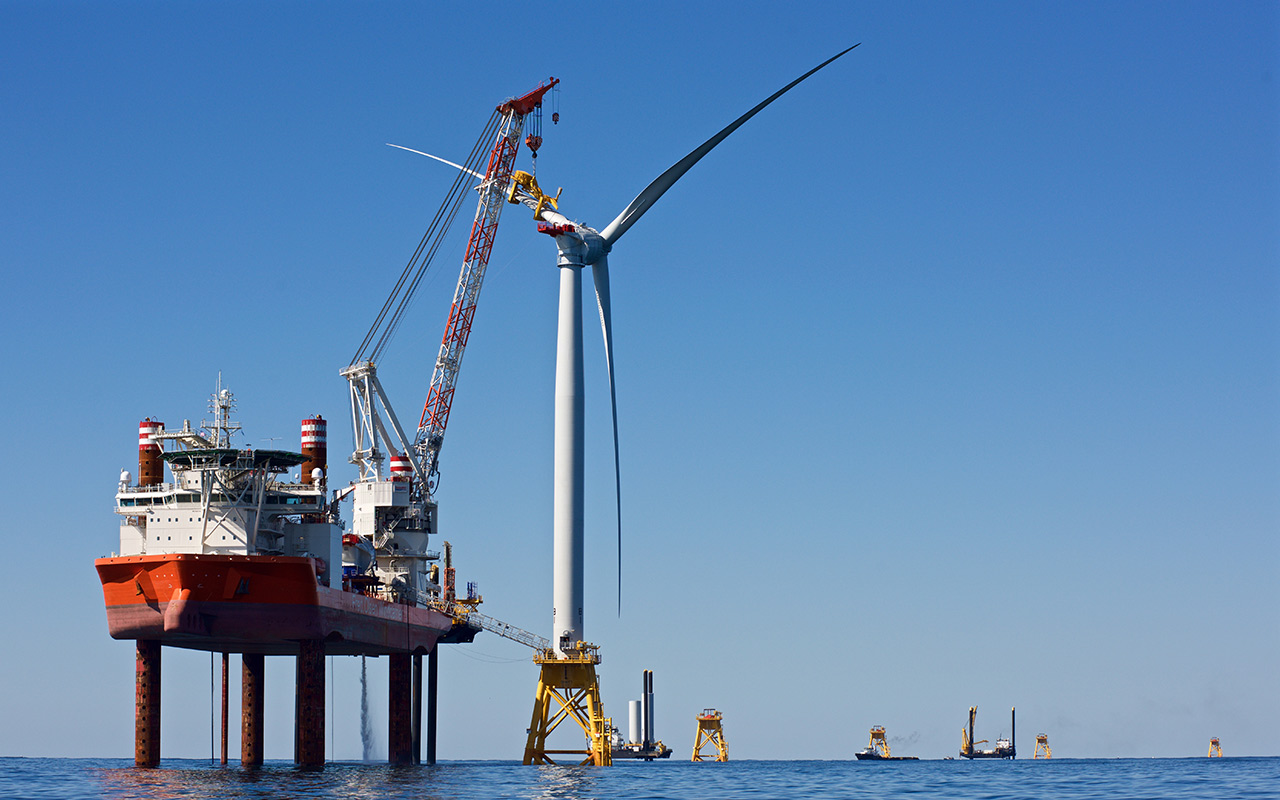News
Ensuring the best possible conditions for the Estonia/Latvia hybrid offshore wind farm
24 September 2021
On 16 August WindEurope CEO Giles Dickson spoke at the kick-off meeting of the ELWIND project, the joint Estonia/Latvia project to develop a hybrid offshore wind farm in the Gulf of Riga. Dickson gave an introduction about offshore wind developments in Europe and shared the experience of past and existing projects.
There is now 26 GW of offshore wind in Europe, and it meets 3% of Europe’s electricity demand. Most existing offshore wind farms are in the North Sea, but there are now projects planned in all Europe’s seas, including floating wind projects in the Atlantic and the Mediterranean. Both the International Energy Agency and the European Commission see wind becoming the main source of electricity in Europe sometime in the next decade. The EU wants 300 GW of offshore wind by 2050 – a 25-fold increase from today. The Baltic Sea already has 2.8 GW of offshore wind in operation and holds incredible potential for more. It could host as much as 93 GW by 2050.
Offshore wind already offers significant economic and social benefits to European countries. It contributes €7.5bn pa to EU GDP, and each new offshore wind turbine generates €15m worth of economic activity. There are 77,000 offshore wind jobs in Europe today, and this should rise to 200,000 by 2030 if European countries deliver on the commitments they’ve made. Offshore wind brings many benefits to local communities in coastal areas, revitalising cities such as Hull in the UK or Gdynia in Poland, by bringing employment and activity with the opening of new factories but also for the operation and maintenance of wind farms.
Hybrid cross-border offshore wind farms connecting to two or more countries, such as ELWIND, will be a big part of offshore wind. They will save money and space and improve energy flows across Europe. The European wind industry believe hybrid projects should account for up to one-third of all of Europe’s offshore wind by 2050. The Kriegers Flak project connecting Germany and Denmark is the first hybrid project installed in Europe. The TSO TenneT is planning to develop a North Sea Power Hub as a cluster of hybrid projects. And Denmark envisages hybrid projects around 2 islands, one in the North Sea and one in the Baltic, which they wish to develop by 2030.
The Governments of Latvia and Estonia started discussing a joint offshore wind farm in 2019 and signed a Memorandum of Understanding (MoU) on it in July 2020. They will run a joint auction in 2026. The capacity of the proposed offshore wind farm is up to 1,000 MW, and the project is expected to be commissioned by 2030.
Dickson congratulated the two Government for the lead they are giving with their joint project. It will be a model of cross-border co-operation on the development of offshore wind across Europe.
“A crucial element in the development of offshore wind is good maritime spatial planning” said Dickson. “It’s vital to factor in the longer-term energy and climate perspective, and avoid a siloed approach to maritime spatial planning. We must take a multiple-use approach to the se space and encourage the happy co-existence of different uses and activities at sea, such as offshore wind and fishing, aquaculture, military activity, nature conservation and tourism.”
Offshore wind farms can coexist happily with other activities at sea such as fishing and defence. Fishing can take place in offshore wind farms, provided it’s not bottom trawling, and the wind industry actively engages with the fishing industry and local authorities. In the Netherlands, the wind and fishing industries agreed a long-term plan to ensure that the interests of both sectors are respected. The same goes for the defence sector: in Belgium, the offshore wind sector and the Belgian Navy are working together on the sharing of images and data.
“Governments need to provide visibility on volumes and revenue schemes to give long-term confidence for the necessary investments” added Dickson. “Contracts for Difference (CfDs) is the most popular and efficient auction design model in Europe currently.”
The CfDs model has two main advantages. It’s relatively cheap for governments as they get paid back as well as paying out. And it’s much cheaper for the society as a whole, consumers and tax payers, because it minimises the cost of financing projects. The higher finance costs from zero bidding add 25% to the total cost of a wind farm.
Dickson then mentioned the need for large-scale investment in ports, grids and the supply chain; and the importance of regional cooperation. In September 2020 the eight countries around the Baltic Sea – Poland, Germany, Denmark, Sweden, Finland, Lithuania, Estonia and Latvia – signed a joint declaration with the Commission to accelerate the build-out of new offshore wind in the region. Alignment on health & safety rules and certificates between countries and on other technical rules and regulations can help reduce costs. Coordination of different countries’ auction schedules are is also important.


